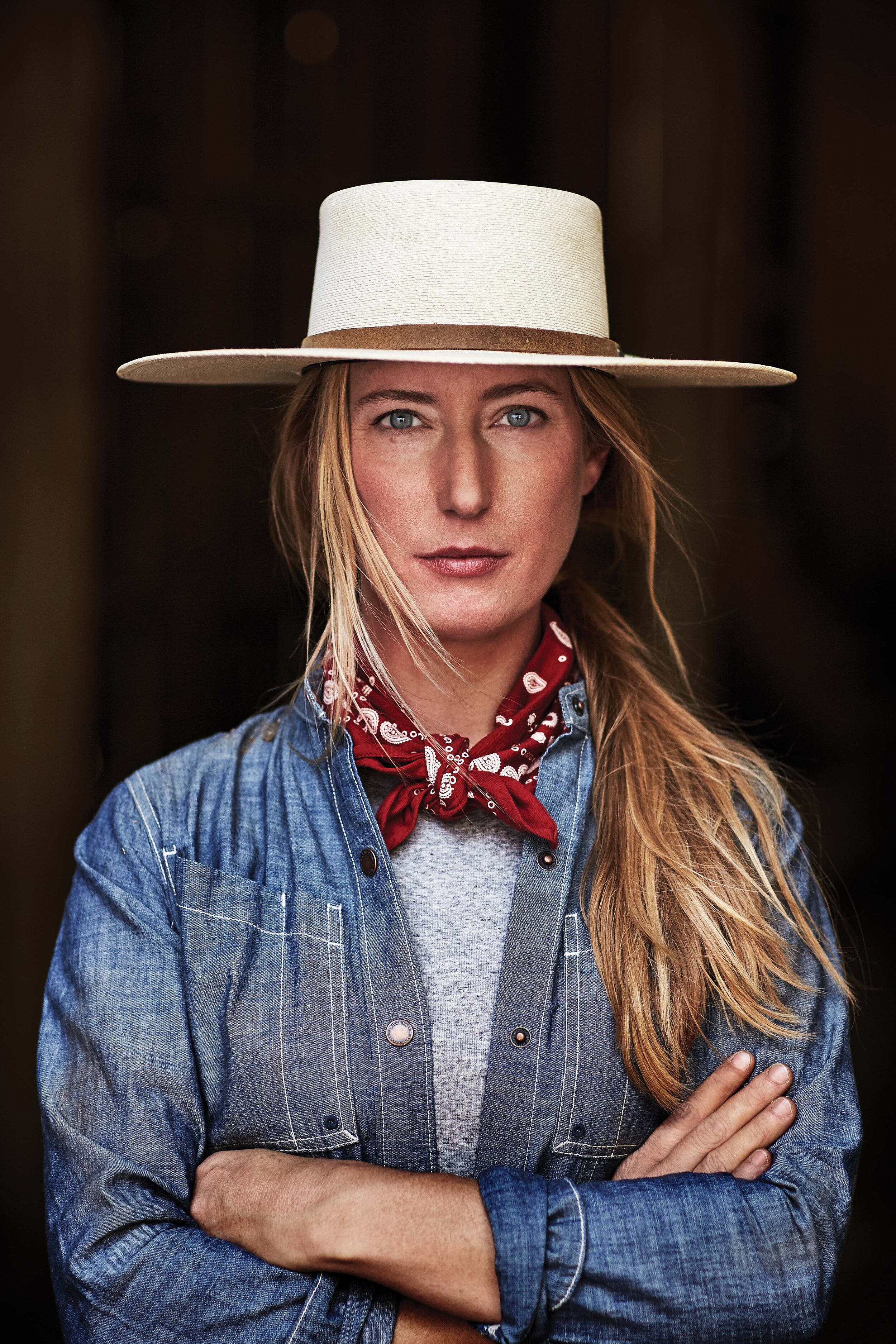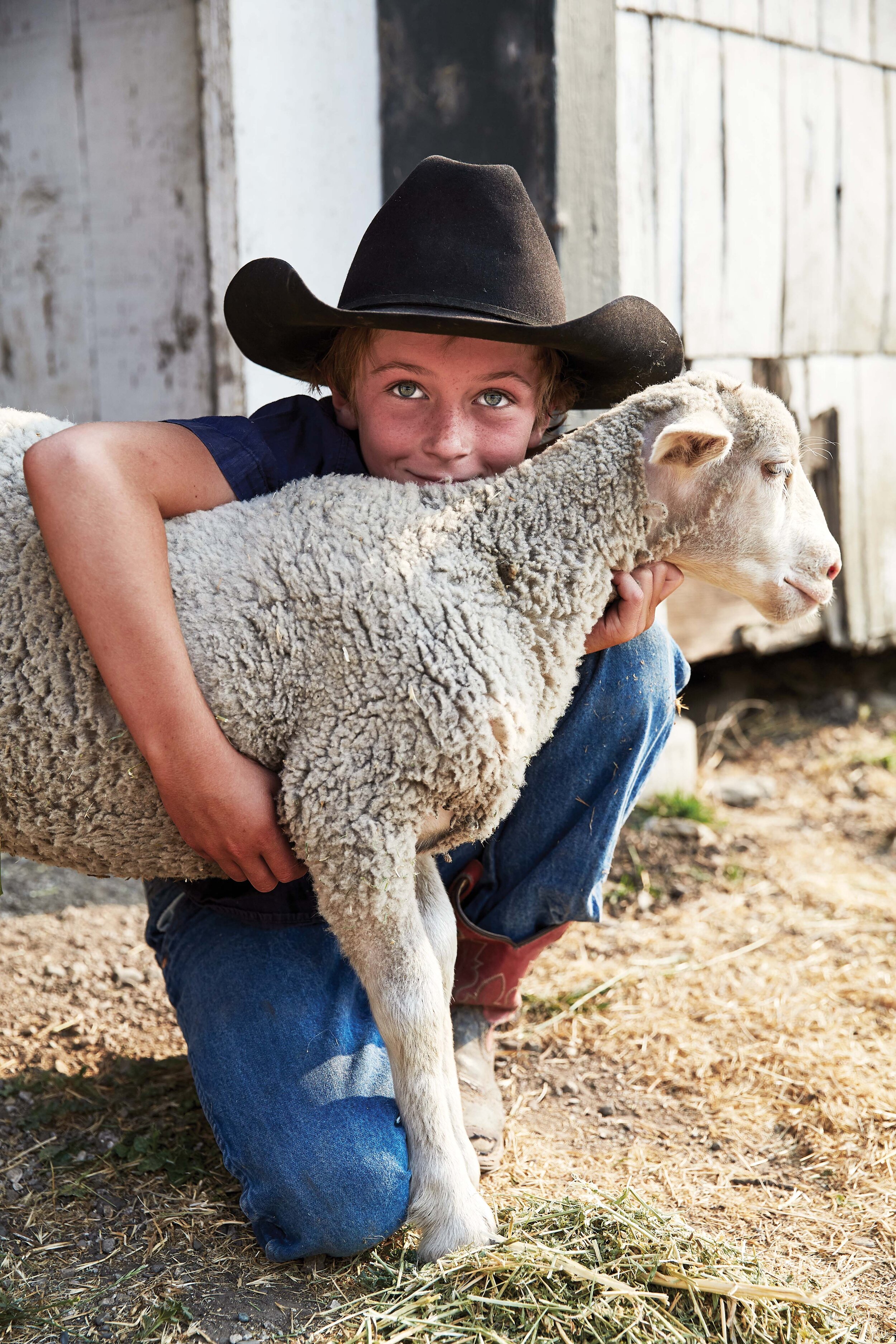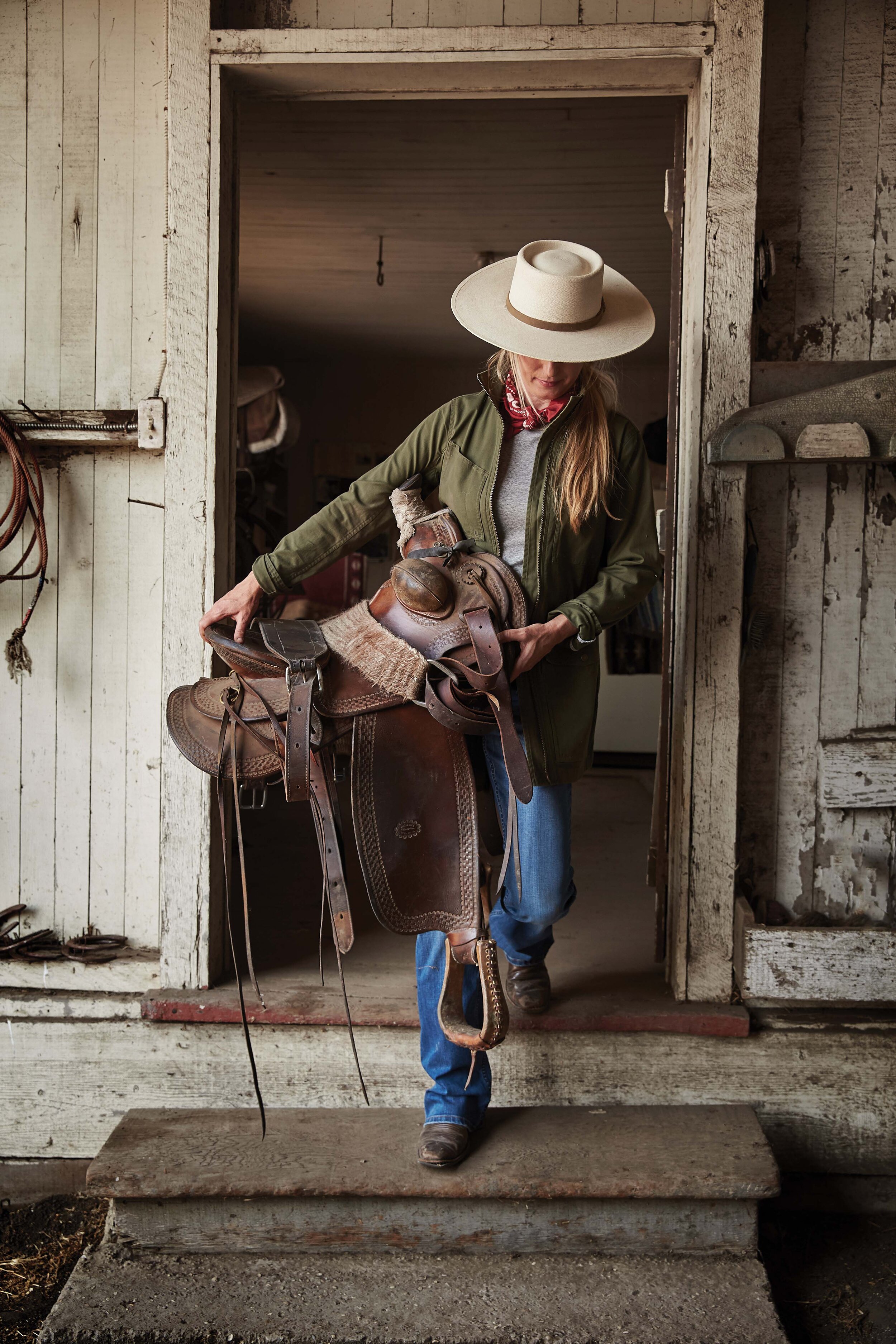Ranch to Network
Elizabeth Poett shows off her Central Coast cooking and lifestyle on television
Written by Keith Hamm | Photographs by Tom Rafalovich
The way Elizabeth Poett describes it, the fall months on Rancho San Julian paint an unrivaled evening light across the rolling hills and oak groves. It’s a quieter season but still busy. The cows are calving. Her boys are back in school. The afternoons are warm, like summer, but the mornings are cooler, and her orchard of golden apples is covered in dew. For generations, these apples have gone straight to the family kitchen—for pies, sauces, snacks, and other sweet treats. These days, they’re also on view in living room televisions and streaming devices around the world.
The first episode of Poett’s cooking show, Ranch to Table, which recently debuted on the newly minted Magnolia Network, features a dinner-dessert combo fitting to the region—a classic Santa Maria grilled tri tip and fire-roasted salsa followed by a galette filled with blackberries and those Golden Delicious apples.
While the show’s focus is food, each episode is also “a bit of an adventure,” says Poett, whose family’s land is centered along Highway 1, between the Gaviota Tunnel and Lompoc. “Working on the ranch isn’t a job so much as a way of life. It’s something we wake up to every day. It’s beautiful here, and it also calls for a ton of work and dedication.”
In the series pilot, Poett shares the spotlight—and a flatbed Ford—with her husband, Austin Campbell, who was also born and raised nearby, his family roots running deep through Central Coast ranchland. While Campbell conveys the rancher stereotype of a man for whom words are encumbrances, he opens up on camera with a short, sweet story about how he and Elizabeth met at a spring branding about 15 years ago.
Then it’s back to the backbreaking work of making sure 500 head of cattle are fed and watered, mending fences, getting ready for the weekend farmers market, and maybe lying awake at night thinking about wildfire and drought and the unending checklist of operational obligations tied to San Julian’s 14,000 acres.
That’s pretty much how it’s been since Poett’s great-grandfather’s grandfather’s grandfather, José de la Guerra, first saddled up on the property in 1837. Between family, food, and the day-to-day, there’s a lot of story there. Plus the vistas of a working Central Coast ranch make for easy-on-the-eyes programming.
“My biggest risk was coming back home and making ranch culture and food my life. It’s a risk I’m so happy I took.”
“Elizabeth is a seventh-generation rancher,” Magnolia Network’s president, Allison Page, said to Santa Barbara Magazine of Poett, (who we tapped as our cover subject in August 2009). “Her connection to the land and respect for traditional cultivation methods makes her story particularly compelling. Being able to bring our audience stories of Elizabeth and her family tending the land, working intimately with each harvest, and incorporating seasonal ingredients into their everyday meals aligns perfectly with the network's mission of sharing good stories around family, food, community, and an entrepreneurial spirit.”
Raised on the ranch by her parents—Santa Barbara Independent cofounder and editor-in-chief Marianne Partridge and pioneering organic beef producer Jim Poett—Poett set out after college to travel and explore. But, she adds, she always knew she would eventually make her way back.
“I think we are all risk-takers at different times of our lives,” she reflected in a social media clip just ahead of the show’s debut. “Going into the world and figuring out what we love to do . . . is a risk. My biggest risk was coming back home and making ranch culture and food my life. It’s a risk I’m so happy I took.”
Back home, she found generous portions of community, as fellow farmers and ranchers came together for brandings, harvests, and other big projects in need of extra hands. And at the end of the day, the helped family always thanks the helpers with a hot meal. This tradition informed her efforts to diversify the business of ranching.
“I was inspired by all of them to cook more and try different things,” Poett remembers. “We have a vibrant food community on the Central Coast, and I’ve always wanted to bring people to the ranch to learn about it, enjoy a meal, and understand how much work it really takes to bring food to the table.”
To that end, since 2017 she’s been hosting what she calls Ranch Table events, held in the shade of a century-old grape arbor. These big country lunches and dinners feature homegrown ingredients and talks about ranch history.
Many of those recipes—fresh, seasonal, and delicious family favorites—have made their way to the Ranch to Table script.
“My hope is that the show will inspire people to be more connected to their food,” Poett says, “that it inspires people to cook and to become more involved in their food, whether it be shopping at the local farmers market or talking with a rancher or with that neighbor who has an apricot tree.” •
















